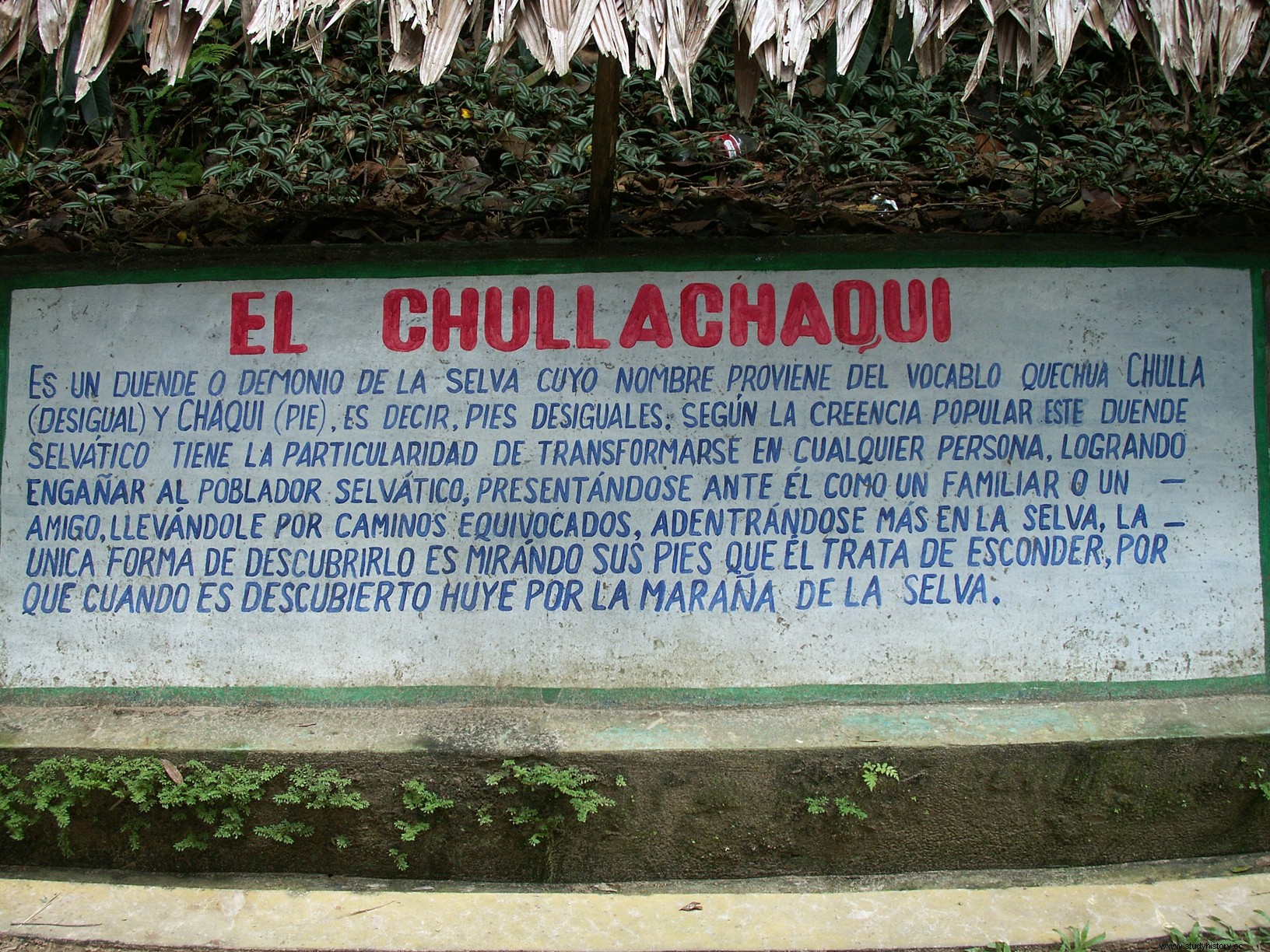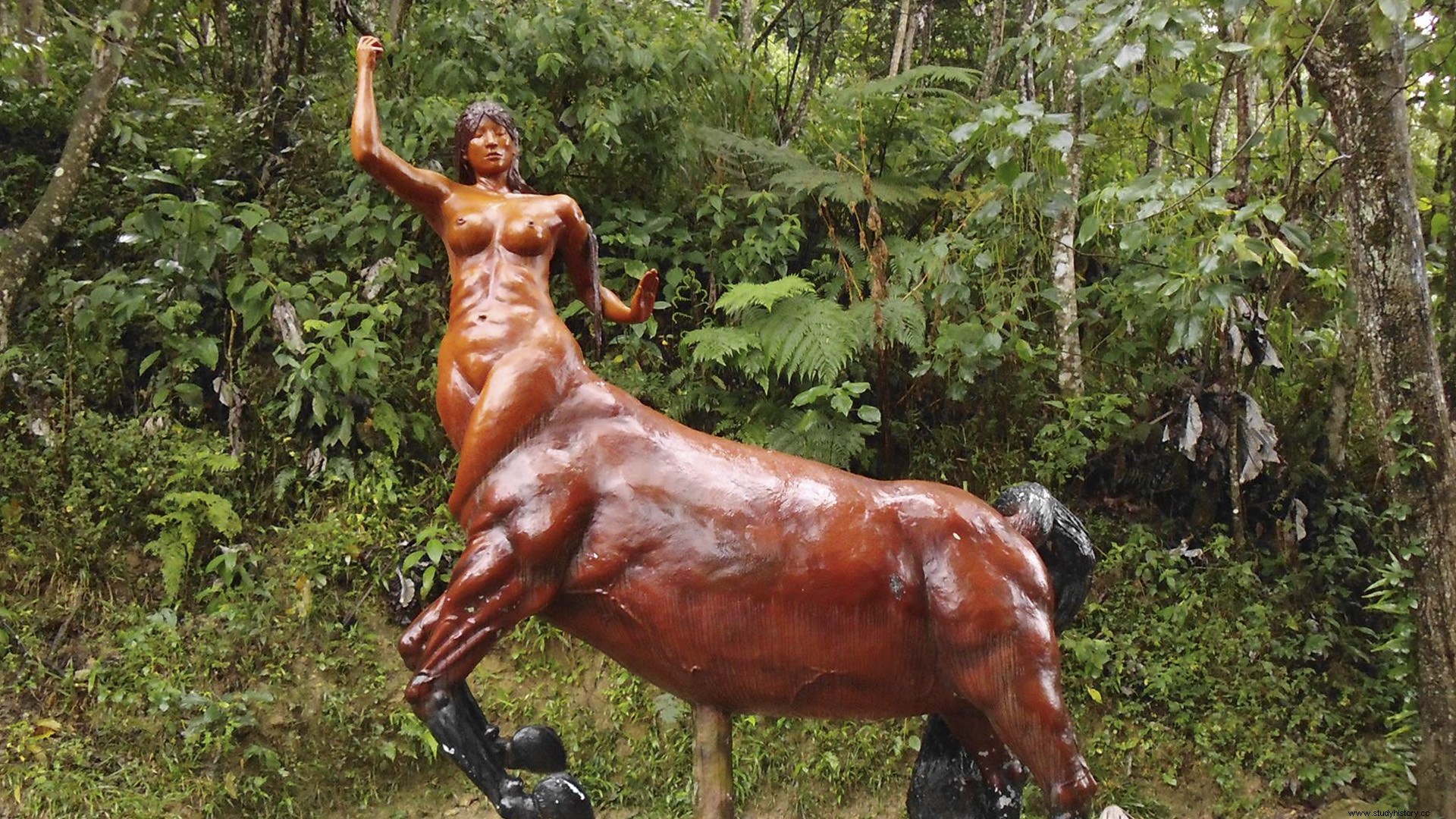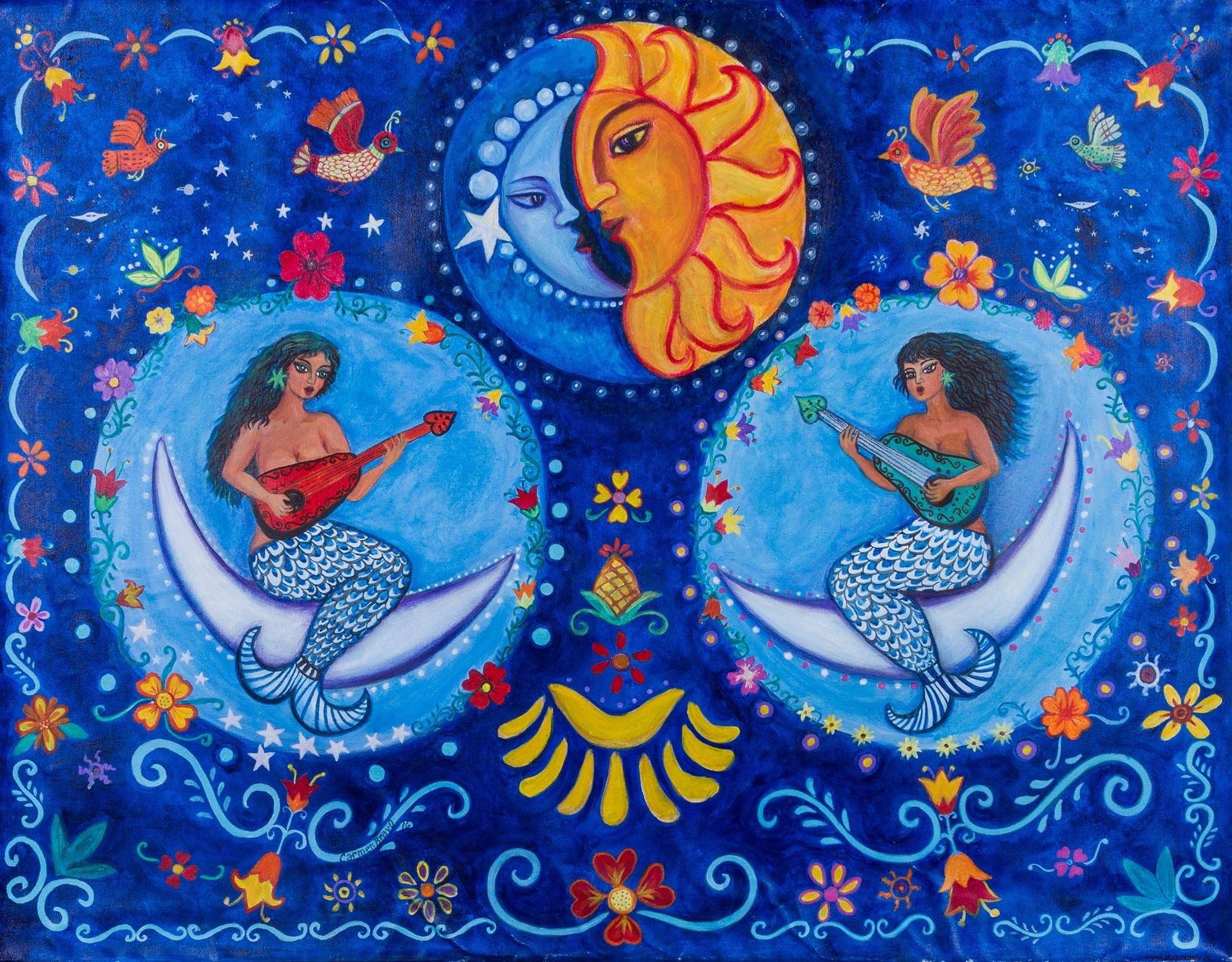Oral storytelling has brought to life legends, myths and stories from any country, and Peru is no exception. The original versions of many myths have changed over the years each time the stories are told, and what we have today is a rich reservoir of legends that mostly haunt the Peruvian jungle, bodies of water, beaches and mountains. These myths bring together different traditions, customs and beliefs and form an important cultural heritage that has been passed down from generation to generation. The stories center on supernatural phenomena, mythological beings and fantastic creatures. Other stories deal with political events, the Spanish conquerors and the Incas and also themes such as life, love and death. Many natural events that take place in the Amazon forests that cover Peru are explained or linked to myths by the locals.
It was the Spanish chroniclers who learned about these myths over the years after the conquest and integrated them into their stories, some of which I have explored here.
Yacumama or Mother of the Water

In the Quechua language (an indigenous family spoken by the Quechua people living in the Peruvian Andes), Yacumma means 'water mother'. It is believed by the indigenous people of the Peruvian Amazon rainforest to be a huge snake a hundred feet long with a head over six feet wide. Yacumama is believed to be the mother of all aquatic animals and the spirit that protects the Amazon River.
According to legend, a fisherman stumbled across a lake in the woods, untouched by human civilization. He was excited at the view of a good catch and rowed to shore on the canoe to cast his net, only to notice something moving in the water. It was a huge snake, and the place for it was enough for the fisherman to run for his life and leave his canoe. Yacumama does not leave anyone who disturbs the lake alive. And then the fisherman, as he ran, asked for salvation. His prayers were answered when four tapirs fell from the sky, distracting the snake just long enough for the fisherman to escape to the village, where his story is told to this day.

Legend has it that Yacumama would attack any living creature that passes within a hundred feet of it. Although the fisherman had escaped, the disturbance of the snake has allowed it to pursue any body of water in the Amazon rainforest, mostly appearing when it rains. To date, observations of a huge anaconda-like snake and strange disappearances of humans in the forest have been told. It is said that everyone who exploits rivers and lakes for their resources disappears. To protect themselves, the indigenous people in the forest blow in a conch shell before venturing out into bodies of water in the forest, believing that the snake would reveal itself if it is in the water.
The Enchanted Bull
In the city of Huanta in Central Peru lies the beautiful lagoon Razuhuillca, a place with the popular legend of Ayacucho attached to it. The city was a common place of flood. Legend has it that a large, violent bull whose appearance out of the city's depths caused flooding and destruction of the entire area. The villagers' frustration with the situation led them to make a plan to stop the animal once and for all. Because of her fragile health, an old woman decided to sacrifice herself to end the beast. After a ritual, the woman went into the depths of a lake in the city, along with a large cage with thick iron rods. At the bottom of the lake she found the volatile bull asleep. The woman lured the animal into the cage, thus bringing peace and quiet to the natives of Huanta. The people believed that they were safe from any flood, until one day the bull broke free from the cage and thus flooded the city again. Legend has it that the people had to catch the bull again and be vigilant over it, to keep the city safe from further destruction.
Chullachaqui

Chullachaqui is described as a small demonized dwarf who has a scary face covered in wrinkles and wearing a hooded hat. What distinguishes this creature from an ordinary dwarf is that he has a goat that the locals recognize him with. This stage gave him his name- in Quechua the words 'Chulla' mean different and 'Chaqui' means foot. In Spanish, his name means 'unequaled pixie'.
According to legend, Chullachaqui pursues the Amazon with his powers, among which he has the ability to transform into anyone. He uses this power to take the form of any relative or loved one who walks through the forest. The appearance and company would lead the victims further and deeper into the forest until they can no longer find a way or way out, and thus die unknown in the middle of the forest. The only thing Chullachaqui can not hide with his original form is his animal bone. As he assumes human form and walks beside his victims, his footprints are of two different kinds - one human and the other animal. This property allows the locals to recognize him. Many unresolved disappearances in the forest are attributed to Chullachaqui.

Other legends describe him as a crippled man dressed in rags, waving his fists to fight anyone who stumbles over him. The indigenous people claim that those who meet him must accept the challenges posed and beat him. Defeating Chullachaqui would allow the person to discover the unlimited wealth the dwarf had hidden in the forest. Anyone who rejects the fight will be cursed with bad luck - inability to hunt, friends and family become enemies, wives go with other men.
Tunchen
There are several myths associated with the origin of the Tunch or the evil spirit in the Peruvian jungle. In the indigenous language, 'tunche' means fear.
A legend says that he is a man with a tortured and evil soul, spurred on by hatred that stays in the shadows in the jungle to scare people. Other legends claim that Tunche, like Chullachaqui, can take the form of a loved one or relative and lure them deep into the forest. Yet another legend says he was a man in love, whose fiancé's father killed him. Many locals say that it is the spirit of those who died in the forest and protects the forest from anyone who travels through the dense area.
Tunche hunts down the victims by whistling a sharp, quirky melody. The person who hears the melody may or may not call in by whistling - hearing the melody means that the person is about to be contacted by the melody to be terrorized to death. The locals believe that he is only hunting the people who destroy the forest by cutting down trees and hunting and endangering the animals. The fate of the victims is still unknown - whether the tunch swallows them or starves them to death or just leaves them in the middle of the forest.
The runamula or mule

According to legend, Runamula is a half female and a half quadruple creature that roams the villages. The creation is the result of a married woman who was punished for having an out-of-wedlock marriage with a priest. Others believe that marriage between relatives in blood causes them to be turned into Runamula, while many others claim that the creature was the result of love between friends and brothers. Another version says that a woman assumes this form and then transforms back into human form without remembering a dot of what happens in between.
The runamula appears on every full moon and frightens the natives with its cooling braying. The locals in the Amazon believe that she is the symbol of infidelity. Runamula is said to terrorize anyone, or more specifically, any woman who has an affair with married men, members of the clergy or is even married. According to legend, a man dressed in black appears on horseback by the woman's door and articulates words that turn her into Runamula. Upon transformation, the woman goes out into the jungle with the rider and is punished for her deeds. Her customs resound throughout the area, frightening the natives. The next morning the woman is in bed without remembering what happened the night before. The only evidence of her nocturnal adventures would be her bruised and sore body. Her relatives took her to local healers to heal her through Ayahuasca sessions (Ayahuasca is a South American psychoactive brew used in a traditional spiritual medicine in Amazonian tribal ceremonies) and baths.
The Myth of Cuniraya Huiracocha

In the southern region of Lima, there are two islets in front of the beaches of Pachacamac to which the legend of Cuniraya Huiracocha is linked. Cuniraya Huiracocha was a god who regularly came down to earth in the form of an unkind beggar. On such a day, as he walked along the Pachacamac Sanctuary, he came across Cahuillaca, the most beautiful woman in the area. The god fell in love with her at first sight and approached her, only to be ignored by the woman. One day, Cahuillaca sat weaving under a lucuma tree. Determined to have her one way or another, Cuniraya became a bird and infected the fruit with bacteria. Cahuillaca picked the fruit and ate it. Nine months later, Cahuillaca gave birth to a baby girl. After a year, the woman gathered all the gods to find out who the father of her baby was. All the gods were dressed in rich attire for the meeting except Cuniraya Huiracocha. Everyone denied that the baby was theirs. To find out, Cahuillaca laid the baby on the floor and asked her to go to her father, whereupon the baby approached and hugged Cuniraya. Cahuillaca's fear and indignation led her to hurry out and jump into the Pachacamac Sea with the baby in her arms. Cuniraya's attempt to stop her was unsuccessful. Both were transformed into two islets, which can be seen today on the beaches of Pachacamac.
Lupunaen

Lupuna is a tree found in the Amazon rainforest. It is a giant tree with a trunk that grows up to a width of ten meters. What distinguishes this tree from the others is that one part of the trunk is wider than the rest, and thus resembles a human abdomen. And of course, the locals also have a legend about it. They believe that the spirit of lupuna is the protector of the rainforest.
According to legend, a local woman walking through the woods felt the need to relieve herself, which she did by squatting near a large tree. During the night, her stomach swelled up and hurt unbearably. Consultation with a local shaman the next day revealed that the pain was a punishment from the lupuna tree where she had urinated. The solution to the pain was to ask forgiveness from the tree for disrespect. The shaman went to the forest, found the tree based on the woman's description and performed rituals overnight, and asked the tree for forgiveness. He cut a small cut in the stomach of the tree and took the juice that lurked home. He asked the woman to drink it, and her pain was healed. To date, lumberjacks and lumberjacks are extremely careful about choosing the right lupun wood to cut down, because in case they damage incorrectly, the tree takes revenge on them.
Amazon Sirens

There are many rivers flowing in the Amazon. These rivers play the role of waterways as a means of transporting goods and people. Rivers are also a source of many myths, including the sirens.
Local men spend days and weeks working in the woods, collecting Amazonian nuts, extracting gold or removing rubber trees. During all the time they worked here, not a single woman was in sight. Working for weeks in the middle of the forest often meant that the men needed female company. While working on the river side, many have claimed that they saw beautiful women singing and inviting them over to the opposite side of the river. Many were enchanted and drowned as they tried to cross the river. Those who managed to control themselves carried the story back to their families and villages.
During the twentieth century, an increase in the demand for rubber led to men working in the forest. Their loneliness led them to capture and have physical relationships with the pink dolphins that inhabited the Amazon rivers and lakes. The action would turn the men into male sirens and make them go to the depths of the rivers to live with the dolphins. The locals believe that this was the reason why many rubber pullers disappeared without a trace in the forest.
The significance of myths and legends
Myths are more than just stories or narratives. They play an important role in both ancient and modern culture. As relevant today as they were in antiquity, they explain worldly events, human experiences, answer timeless questions and play the role of a compass for each generation. Mythical topics focus on the universal themes of humanity - life and death, supernatural events, natural phenomena, the origin of people and the world. Unlike fairy tales, myths do not always end in a light tone. This shows that they are true to the nature of life - there will be celebrations as well as reasons for complaint and misery as well as joy.
In today's world, myths, as in movies and novels, are used as metaphors. A name or phrase based on a myth can convey what the author wants to convey in very few words. For example, the phrase "Beware of Greeks carrying gifts" needs no explanation from anyone familiar with the legend of the Trojan horse. Themes and characters in myths remain timeless, but each generation of storytellers adds their own layer of either fact or fiction to them, making them relevant today.
